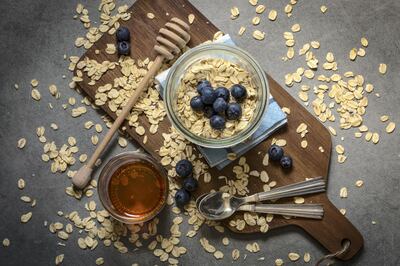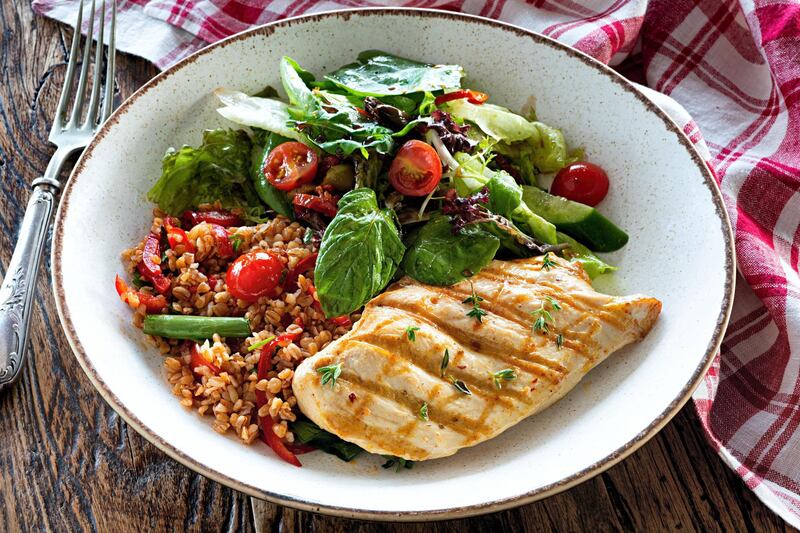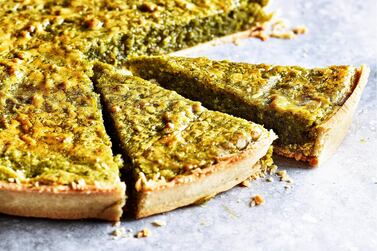If one had to sum up the Nordic diet in four words, one would simply say: eat like your ancestors. To elaborate, to go Nordic you need to structure your menus and fill your plates with produce that existed before processing and preservatives took over the food industry. Eat more fruit, more vegetables, more whole grains, less meat, especially red meat, little salt and, as far as possible, no added sugar. Source locally and source what's grown organically. Use traditional recipes and regional methods. Food is history, culture, and personality all rolled into one, and your plate or pyramid should reflect that.
What is the Nordic diet?
If the culinary geniuses at what Restaurant magazine called the Best Restaurant in the World four times in five years (Noma, Copenhagen) swear by the formula, there must be something to it, right? When celebrated chefs Rene Redzepi and Claus Meyer opened Noma in 2003, it was to redefine and reinterpret Nordic cuisine, while highlighting important considerations such as sustainable sourcing and ethical production practices. The result was a 10-point document called the New Nordic Food Manifesto in 2004.
Primarily conceived and formulated by Meyer, the manifesto was signed by a clutch of visionary Scandinavian chefs – 12 to be precise – and details the organising principles for anyone who wants to cook or eat like a modern-day Viking.
Some of the aims listed in the manifesto are: "to reflect the changes of the seasons in the meals we make"; "to base our cooking on ingredients and produce whose characteristics are particularly in our climates, landscapes and waters"; and "to promote animal welfare and a sound production process in our seas, on our farmland and in the wild".
Over the past 15 years, the combined culinary landscape of Denmark, Norway, Sweden, Iceland and Finland has witnessed a sea change. Several restaurants have earned international fame for menus that champion traditional dishes prepared with locally foraged ingredients. These include everything from moss, seaweed, elderflower, beets, elk, nettles and crayfish to blueberries, lingonberries, twigs, edible birch bark, rye, oats, barley, and all the greens that happen to be in season at the time. Restaurant Relae and Amass in Denmark, Faviken in Sweden, Juuri and Olo in Finland, Maeemo in Norway … the list of eateries adopting the principle of serving what they can hunt, gather and prepare themselves is long and growing.
Why you should try it
After more than a decade of helping chefs carve out their niche in a world that had reserved the highest echelons of fine dining for French cuisine, the Nordic diet discipline has entered the mainstream. In the past couple of years, the Nordic diet has found favour with nutritionists, dieticians, food scientists, and weight-loss experts across the world due to the large range of health benefits it offers. According to a 2017 Danish study, adherence to the Nordic diet lowers the risk of stroke. Another study finds that the diet helps trigger weight loss and reduces blood pressure in obese people. A third concludes that the Nordic diet improves the lipid profile and helps reduce inflammation in people who suffer from metabolic syndrome (a cluster of conditions that puts patients at risk of cardiovascular diseases, type 2 diabetes and stroke).
But how does a diet that advocates sustainable and local consumption become popular as a must-try nutritional movement in countries thousands of miles away from where it originated? According to clinical dietitian and founder of Simply Healthy, Mitun De Sarkar, the way to go about it is by not thinking of it as a diet with a rigid meal plan, but adopting a healthy way of eating for life. "Eating clean, local and seasonal; a diet rich in fruits and veggies, lean proteins, and healthy fats from nuts and seeds; avoiding sugar and processed foods with additives are the key to living a long healthy life. Whether you call it the Nordic diet or the Mediterranean diet, these same principles are promoted by most qualified dieticians, anyway," she says.
Comparisons between the Nordic and Mediterranean diets are inevitable. Both emphasise piling up on fruit and vegetables, healthy fats and complex carbohydrates with a low glycemic index, and are hailed as two of the healthiest diets in the world. But while the Mediterranean diet allows for regulated small quantities of white breads and pastas, the Nordic diet stoutly insists on natural and unprocessed whole grains, such as pumpernickel. Another difference is in the recommended oil. While Mediterranean cooking uses olive oil, Nordic is all about cold-pressed rapeseed oil, better known as canola, which is low in saturated fats and high in omega-3 fatty acids that promote cardiovascular health.
And finally, what sets the Nordic diet apart from its Mediterranean cousin is its focus on heightened consciousness about where the food came from. Apart from being gentler on the environment with a reduced carbon footprint, eating regional and seasonal comes with many health benefits, says Pooja Makhija, author of Eat Delete and nutritionist to many Bollywood celebrities
"The farther your food has travelled to get to you, the higher the number of preservatives added to it to keep it from perishing. When food is being exported to countries tens of thousands of miles away, the soil used to grow it is fortified by strong combinations of chemical fertilisers," says Makhija. "The more we eat exotic food from far-flung places, the higher the concentration of chemicals we ingest. Farm-to-table diets help us move away from this culture of heavily processed, preservative-laden food habits."
De Sarkar agrees. "Produce starts losing nutrients within 24 hours of being picked. Add to this the travel time at different temperatures, artificial lights, etc, and the food that eventually reaches us has a significantly lower nutrient value. The fresher the food, the healthier it is for the people eating it," she says.
It all boils down to this: while following the Nordic diet, eat what's local to you. This can be a difficult ask in the harsh climactic conditions of the Middle East, where the heat and soil integrity don't support the growth of a wide variety of fruit, vegetables or grains. Keeping this in mind, De Sarkar says a diet that follows the Nordic principles for UAE residents would look something like this.

Breakfast
Oatmeal with low-fat organic milk topped with figs, pomegranate, dates and some cinnamon; or fresh local eggs cooked with olives and roasted capsicum served with rye bread.
Snack
Freshly cut citrus fruits and nuts, such as groundnuts, walnuts, toasted pine nuts, or olives.
Lunch
Brown rice with fresh (not frozen) hammour fish or Sultan Ibrahim, served with roasted eggplants, squash, cauliflower and okra, drizzled with extra virgin olive oil and lime.
Dinner
Fresh mixed greens, tomatoes, cucumber, and bell pepper salad mixed with some chickpeas, with a fresh tahini dressing and grilled chicken breast.







